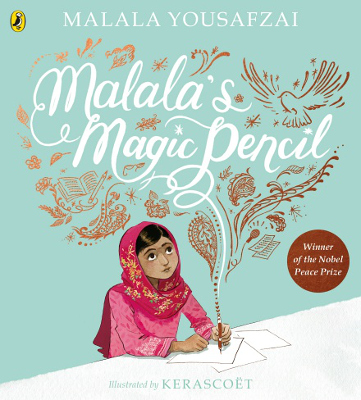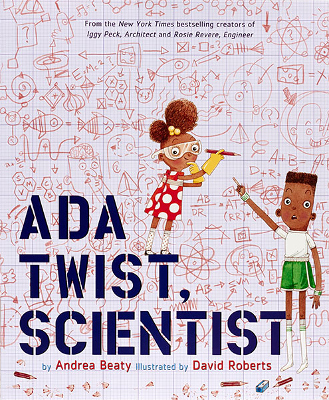 First Published: 17th October, 2017
First Published: 17th October, 2017
Genre: Children’s Memoir / Picture Book
Available: Amazon.com | Amazon UK
Malala has a comfortable life playing with her brothers and going to school, until the Taliban takes over her town.
This is not the story of a girl and her magic pencil. It’s the true story of Malala Yousafzai for younger readers. I do have some doubts about this title choice, as the context is not necessarily going to be clear for children picking this up. An adult will hopefully recognise the name and realise what it’s about.
The focus is on Malala wishing she has a magic pencil to change the world, then slowly coming to realise that she could do a similar thing through her writing. I did like the way this storyline tied together, as it makes it relatable for a younger audience. It does also highlight how reading and writing can be used in a practical way, which reluctant readers can sometimes find difficult to see.
The pictures are fairly realistic watercolour paintings with black ink outlines. The details help to make the settings clear. There are also swirly patterns in places, examples of which can be seen on the cover, which invoke a sense of imagination and creativity.
There are obviously violent aspects to the story, as Malala’s town was taken over by the Taliban and she was shot. This is handled in an age-appropriate way. There are some images with men carrying guns and it’s clear people are scared, but there are no scenes showing the guns in use. The attack on Malala is very glossed over. It cuts from saying they want to stop her to her looking out of a window with a hospital bracelet on. I do think this image could have been clearer about being a hospital, as the small details would be easy to miss, particularly if the reader hasn’t stayed in a hospital before. It wouldn’t have needed to show all the gory details of the attack to do that.
The text is better suited to older picture book readers. There are some longer paragraphs and pages with multiple paragraphs. There is also a lot to take in, even in this simplified form. That said, I think the framing of the story does make it understandable for the intended age range. It’s a difficult story to simplify and it mostly succeeds in that.
[A copy of this book was received from the publisher for review purposes]
 First Published: 5th October, 2017
First Published: 5th October, 2017 First Published: 6th September, 2016
First Published: 6th September, 2016 First Published: 21st August, 2017
First Published: 21st August, 2017 First Published: 4th July, 2017
First Published: 4th July, 2017